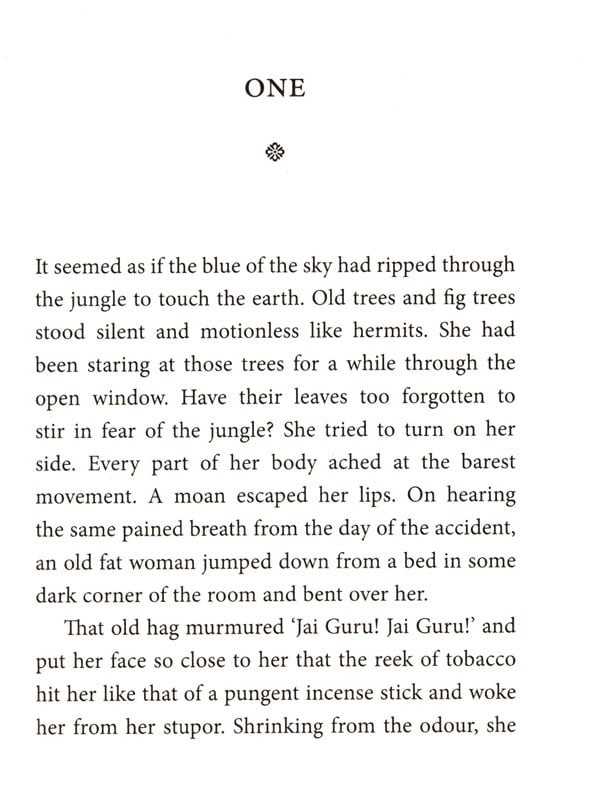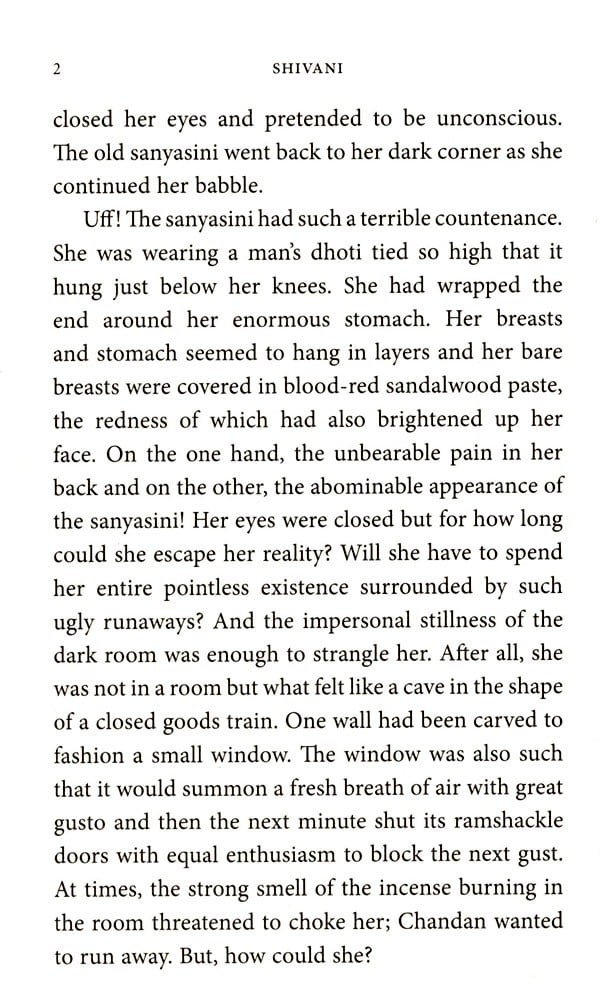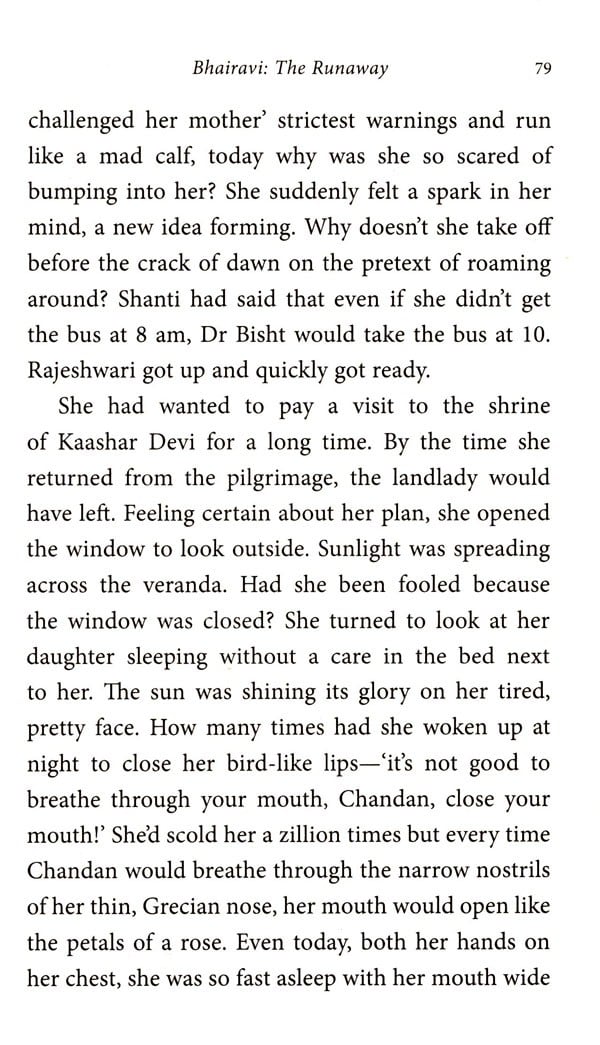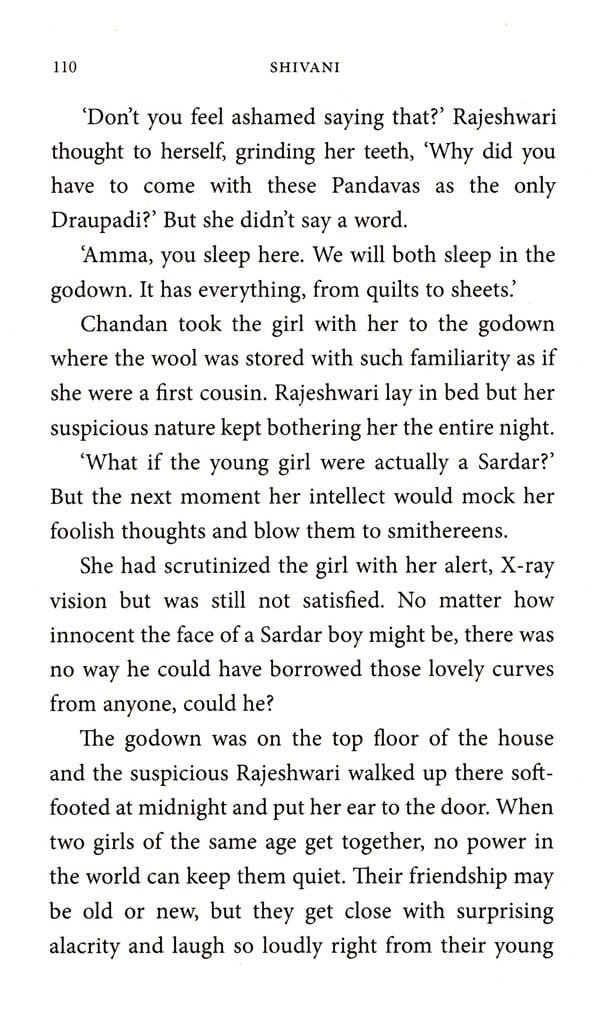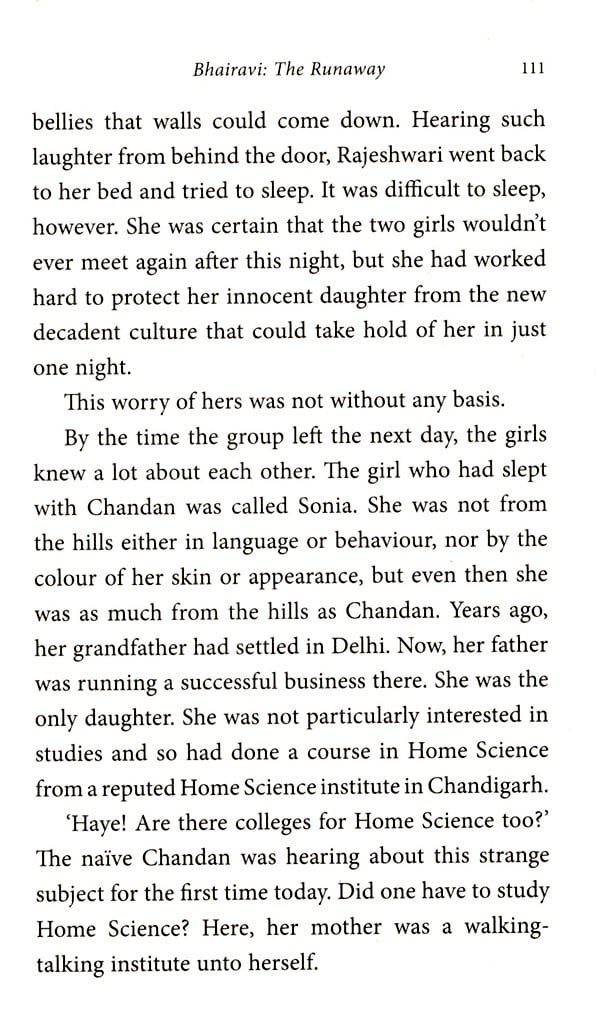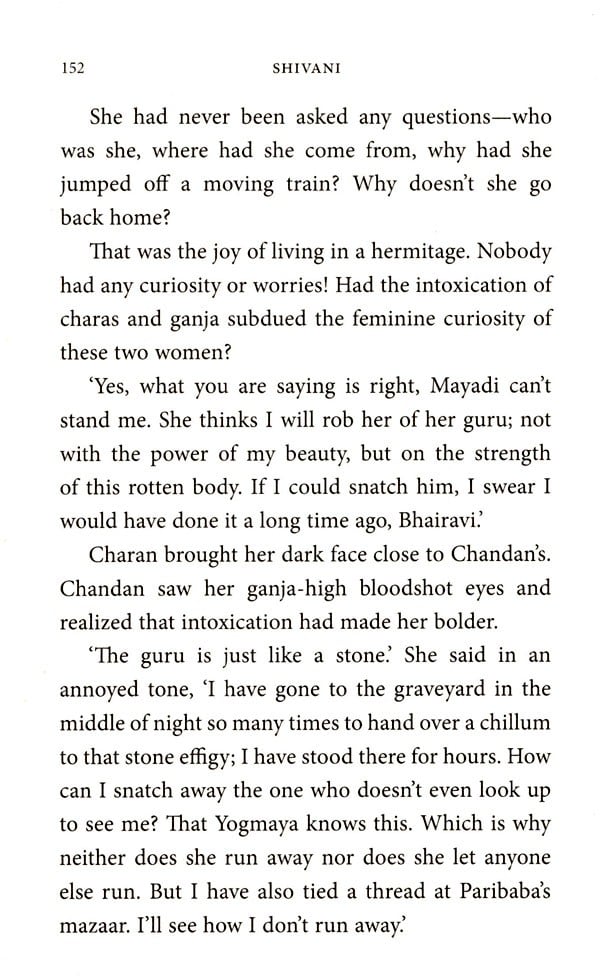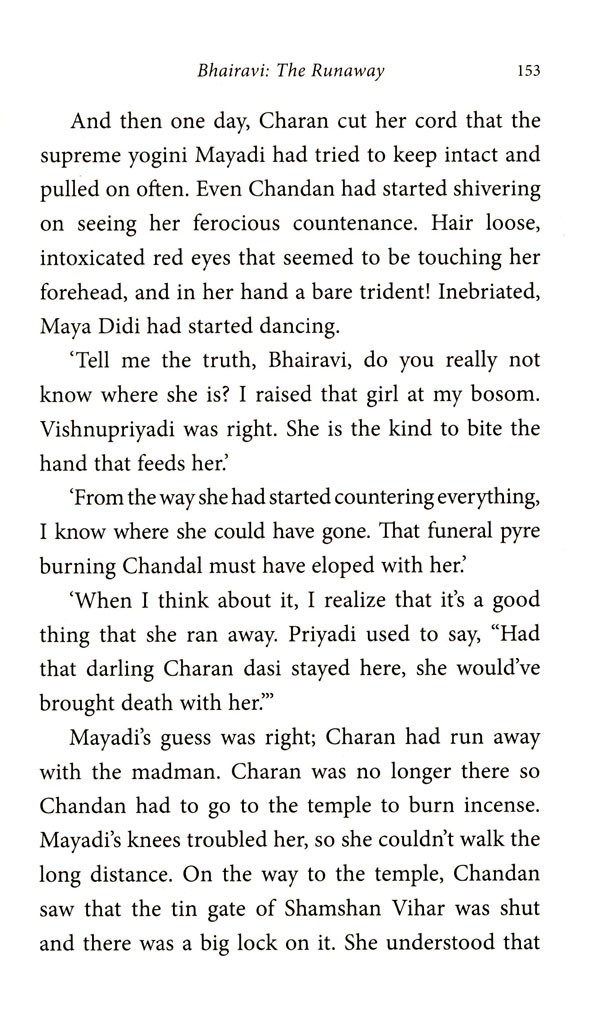
Bhairavi- The Runaway
Book Specification
| Item Code: | AZA291 |
| Author: | Shivani |
| Publisher: | Simon & Schuster India |
| Language: | English |
| Edition: | 2020 |
| ISBN: | 9788194646440 |
| Pages: | 216 |
| Cover: | PAPERBACK |
| Other Details | 7 x 5 inches |
| Weight | 170 gm |
Book Description
A still, dense, ancient forest. A dark cave deep within. And in it a woman-child whose beauty can move the most pious to sin. Who is she and why did she jump from a moving train to land in the biggest cremation ground teeming with Aghori Sadhus?
In this story spanning generations and redolent with Gothic imagery, Shivani urf Gaura Pant tells the story of a woman's life, her moral and mental strength and her resilience. She also examines the choices women have in her beautiful, descriptive prose. With an erudite foreword by her daughter and scholar, Mrinal Pande, and a preface by the translator, this book is Shivani for the 21st-century reader.
Gaura Pant, who went by the nom-deplume of Shivani, was one of the most widely read fiction writers in India. Her stories, serialized in Hindi magazines throughout the 60s and 70s, were read in practically every Hindi-speaking household and continue to have a strong hold. She was awarded the Padma Shri for her contribution to Hindi Literature in 1982.
Priyanka Sarkar is a Delhi-based translator and editor. Her translations of short stories have been published by Oxford University Press, South Asian Review and Women Unlimited.
It was the summer of '97. I was all of 14 and restless, guilt-tripping my single mother for yet another summer vacation wasted in the sweltering small town of Udaipur when we could have had gone somewhere exciting and cooler. Exasperated, Ma pushed a copy of Shivani's Surangama into my hand.
I knew nothing about Shivani at that point but Surangama drew me in. Her story spoke to me at a personal level though there were parts of the story that were beyond my understanding at that time. I gave my copy to my closest friend, convincing her to read it, and went back to raid Ma’s library and read whatever I could find by Shivani. I was drawn into her small-town world of the hills, a world I was somewhat familiar with. Her heroines were all beautiful, independent, talented and strong-willed. They fucked up or life fucked them up but they persevered. I wanted to be them.
Twenty-three years have passed since then. I got out of the small town, got a college education in the big city, then went on to work in publishing, living a life more or less on my own terms. At a personal level, I realize that I got to do and be a lot of things that Shivani's heroines didn't even get the chance to do. She was writing between the 1950s and 1970s. Times have changed somewhat I am living in a big city and have many freedoms—though that is probably the oversimplification of the century.
Gaura Pant urf Shivanis stories, characters and the situations they find themselves in still resonate for me; at times they can even be triggering. What makes her stories so powerful other than her characters, is her vivid writing that had made her a household darling in the Hindi-reading belt of India. Her readers were primarily women. That could be because she was writing about the home and the hearth and the sense and sensibilities of those within it.
Bhairavi is perhaps the darkest of my mother's novels. It was first serialized in the popular Hindi weekly Saptahik Hindustan, and published soon thereafter in 1978 by Shabdkar Prakashan. Once that publishing house closed down, it was published with most of Shivani's books by Saraswati Vihar Prakashan and ultimately by Radha Krishna Prakashan. They have published Bhairavi in both hard cover and paperback editions.
The late 1980s were a strange time in Independent India's history. The vernacular publishing industry had come of age and Hindi writers had found millions of readers across the Hindi belt. But at the same time royalties remain poor and publishers skittish. Also a new backlash of social conservatism was becoming visible on the horizon. It was hostile to women who had grown up in Gandhi, Tagore and Sarojini Naidu's liberal India, particularly those who wrote or performed on stage. Our tiny Kumaoni society of Chauthani Brahmins was no exception. Shivani's own family did not fit the joint family pattern, but the Brahminical ideology of the basic patrilineal system Brahmins in the hills lived by, eyed the Shantiniketan-educated Gaura Pant ‘Shivani' with certain misgivings as an aberration. They were mystified and upset in equal measure by her prolific writing skills that made her into a great literary phenomenon with no help from either a literary mentor or the family. They criticized her in low tones but all read her work avidly as soon as it saw print. Later their mutterings that filtered down to us, courtesy of various aunts and uncles, were tinged with both a deep disapprobation and envy.
Some ideas are not new, but need to be affirmed by creative writers. Freedom of expression for women was one such. For our mother it meant not just continuing to write, but also sending all three of her daughters to college and introducing them to the world of creative writing, music, fine arts and of course numerous well-known writers.
**Contents and Sample Pages**
